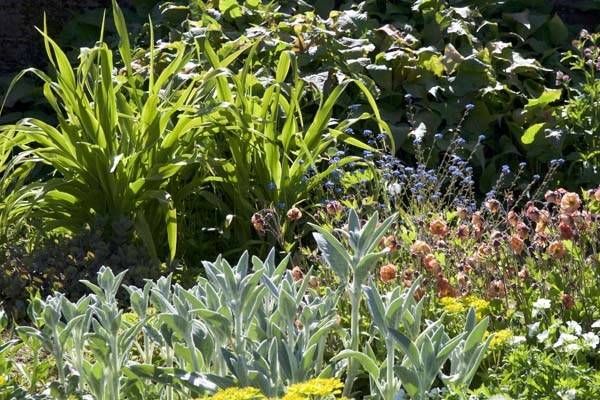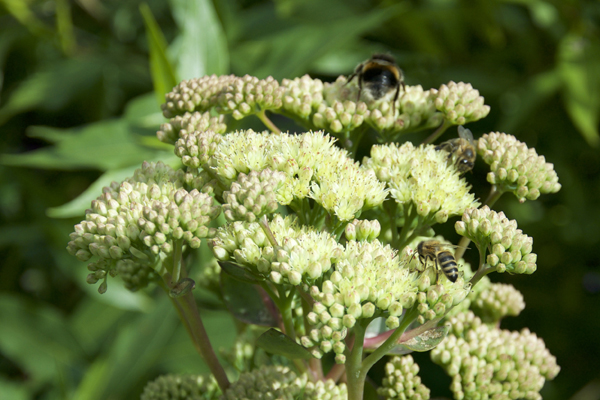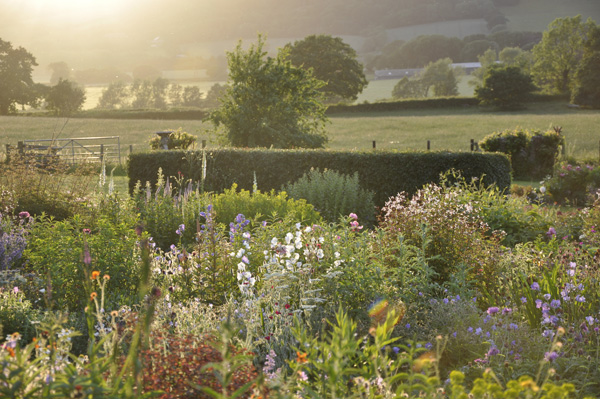Centaurea (Perennial Cornflowers | Knapweed) Plant & Care Guide
Also known as the perennial cornflower or knapweed, I love these free-flowering, clump-forming plants. They are quite pollinator friendly plants, and are a great easy-to-grow summer blooming perennial for a cottage style garden. Cornflowers make quite good plant cuttings for a vase as well.
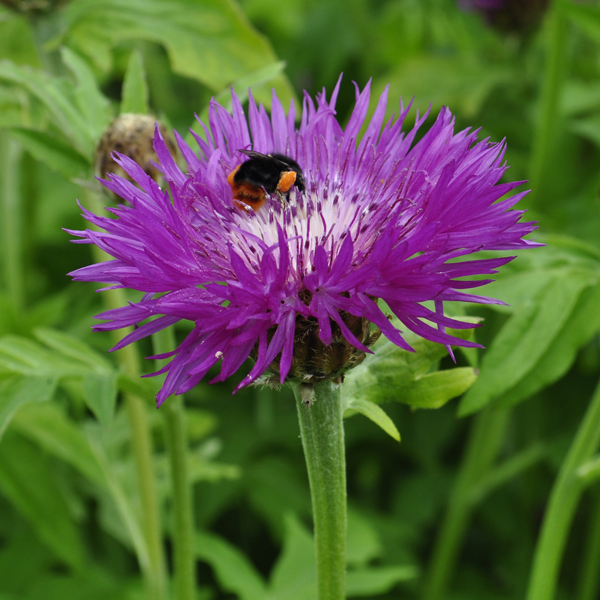


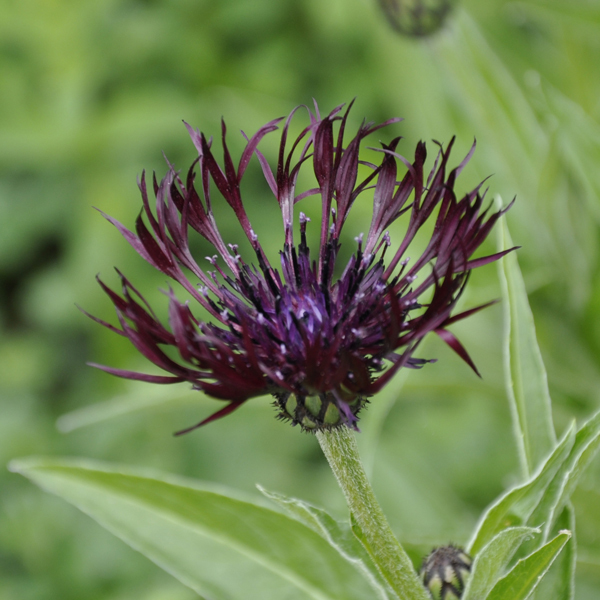
Left to right: Centaurea dealbata 'Steenbergii', Centaurea montana 'Purple Heart', Centaurea atropurpurea, Centaurea 'Jordy'
Types of Centaurea Plants
Centaureas can be divided into two groups: tall and upright ones with large, knob-like flowers and short, mounding types with flat, wheel-like flowers. Centaurea is quite a broad species, with over 80 varieties cultivated across the world, including perennial and annual cornflowers to perennial Knapweeds.
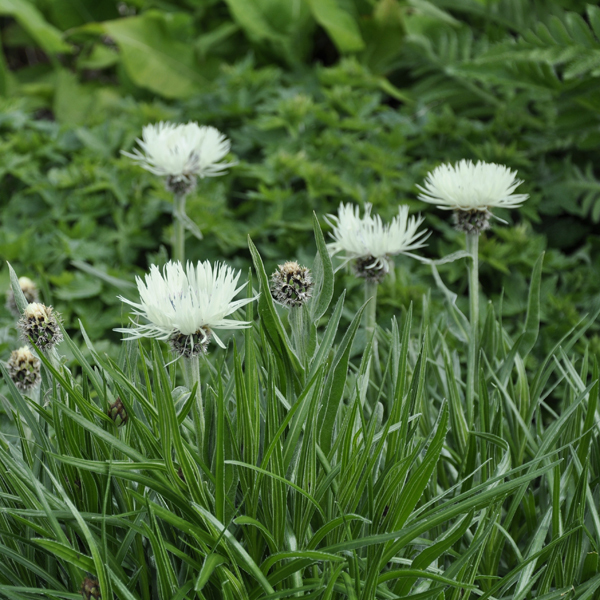

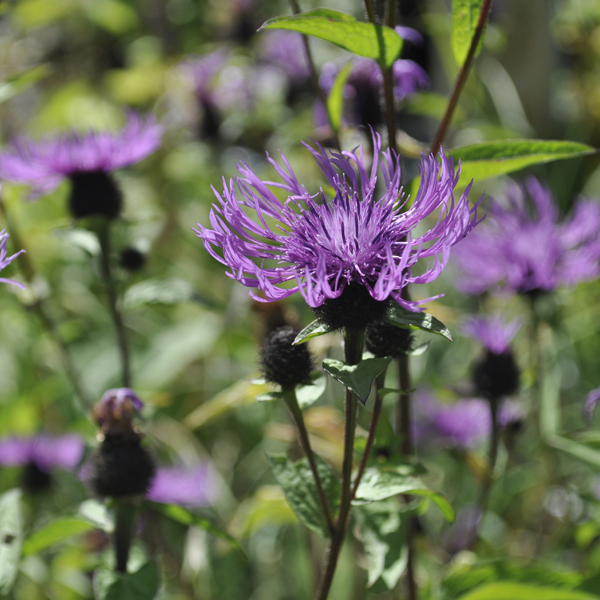

Left to right: Centaurea montana 'Sulphurea', Centaurea macrocephala, Centaurea 'Caramia', Centaurea montana 'Parham
When do Centaurea Flowers Bloom?
They flower all through summer, often starting from late spring and lasting until autumn if they bloom again. All varieties have flowers that emerge from distinctive foliage. Cornflowers are great summer blooming perennials, that look great in the front of the border.
Centaurea Leaves & Appearance
Most Centaurea are short and therefore great for the front of the border.The foliage is also very handsome, bearing clumps of leaves that don’t stray too far from the flower stem. The exact shape and colour varies, but they tend to be a protuberant boss of scaly, papery bracts. In my garden, the shorter types form the backbone of the mid-spring border.
Where do Centaurea Plants Come From?
Native to the meadows of Europe, Cornflowers have been grown in gardens across the continent for centuries, thanks to its reputation as a herbal remedy for a variety of digestive ailments. They’ve somewhat lost that reputation in the modern era, yet we continue to grow them. Their hardy nature makes them great for beginners, and their role as a pollinator friendly plant makes them highly desirable in cottage style gardens.
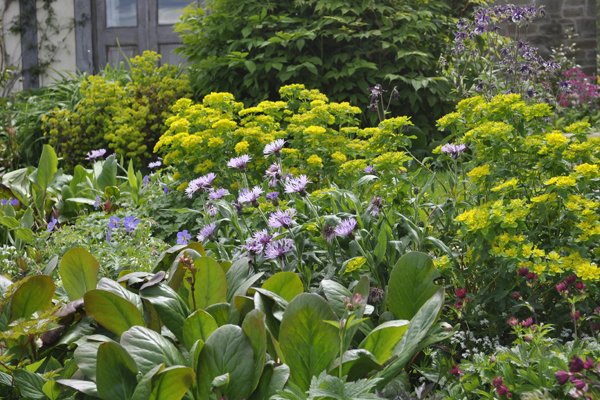
Centaurea montana 'Carnea' with Euphorbia polychroma and the leaves of Bergenia 'Beethoven'
Centaurea Planting Guide
Where to Grow Centaurea Cornflowers
Centaurea love a well-drained soil that does not dry out, in sun or partial dappled shade. They can survive in a wide variety of soils, including acidic thanks to their hardy nature, as long as the soil remains somewhat moist.
How to Plant Centaurea
Both annual and perennial Cornflower seeds are quite popular and should be sowed thinly in the spring. Bear in mind that the perennial variety grows much slower than the annual, and I recommend you buy plants online that have been grown in our nursery if you are looking to quickly fill the front of your border. They need space to spread, so give plenty of space between each plant when you place them in the ground.

Centaurea montana with Aquilegia vulgaris 'Alba', pink Chaerophyllum hirsutum 'Roseum'
Centaurea Plant Care
They’re easy to grow, and you can almost entirely leave them alone, except if you want them to look their best. Cornflowers as a whole are very drought resistant and rarely need watering. Younger plants should be given a helping hand with a bit of watering during droughts.
Pruning
Remove the old stems of shorter Centuaurea can discourage the plant from seeding around and to promote new flowers. Cutting back the whole clump will encourage tidier growth and help to prevent mildew from taking hold later in the season. Deadheading blooms during summer can encourage new flowers, and prevents self-seeding across your border.
Pests
As mentioned, mildew can be a problem in wet weather, which is why we cut back the clump to the ground to prevent it spreading. The leaves are popular with slugs, aphids, and sawfly caterpillars, but as a pollinator friendly plant, I would not recommend the use of pesticides to deal with them. Good plant hygiene, a healthy ladybird population, and a hard spray of the hose are your best lines of defence. Centuaurea leaves grow very rapidly, so you can even turn a blind eye as long as the flowers aren’t affected.
Are Cornflowers Invasive? Will They Overtake a Garden?
They’re not invasive and aren’t hard to remove, but they are very good at self-seeding and will spread new plants quite far in the garden if you don’t intervene. Deadheading the old flowers before they go to seed puts a simple stop to any unwanted new plants.
What Flowers are Centaureas Great With…
Anything 'cottagey' including Achillea, Campanula, and Salvia. Other meadow-based summer blooming perennials are a good match too, including Geums and some Irises. Be sure to take their natural spread into account when you are planning the border. I find one Centuaurea to be quite enough for a border or bed.
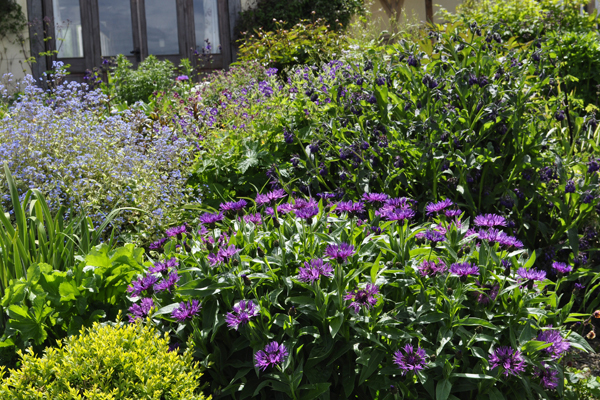
Centuarea montana purple form with blue Brunnera macrophylla 'Hadspen Cream' and purple flowers of Symphytum officinalis
